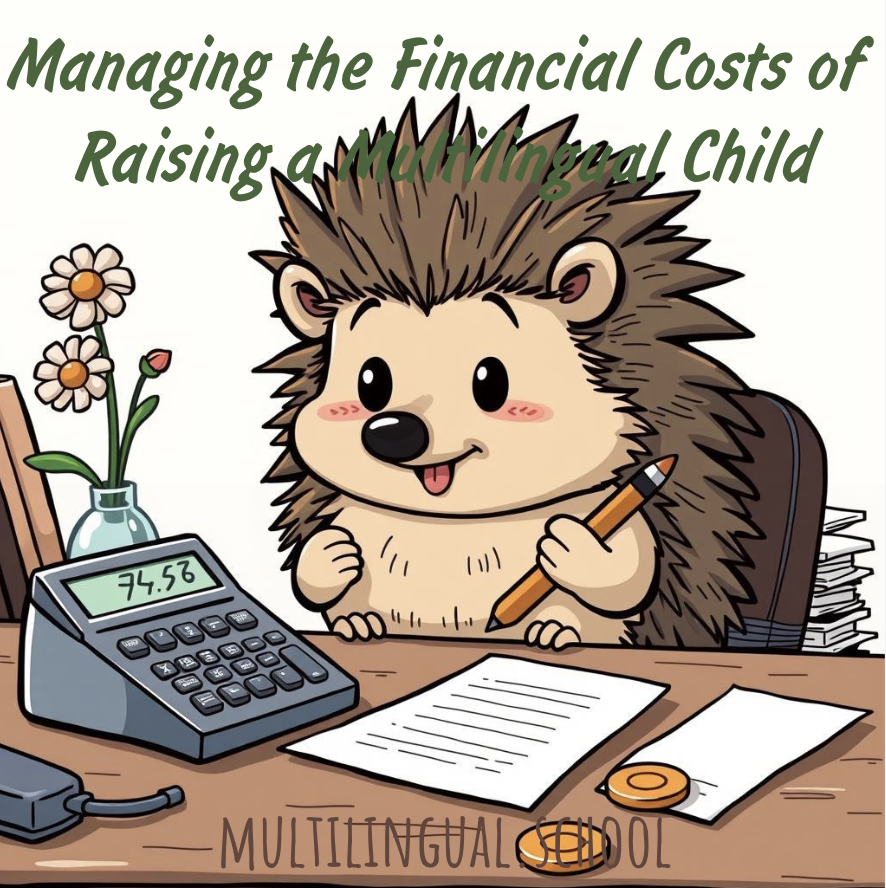When Raising a Multilingual Child Feels Like Too Much: A Parent’s Guide to Overcoming the Overwhelm
This post may contain affiliate links, which means that I may receive a commission if you make a purchase using these links. You do not pay a higher price.
Feeling overwhelmed by the responsibility of teaching and maintaining multiple languages
You’ve chosen to raise your child with multiple languages—an incredible gift that opens doors to cultures, opportunities, and connections. But some days, it feels like an impossible task. Between juggling language lessons, finding resources, and worrying if you’re doing enough, the responsibility can weigh heavily on your shoulders. If you’ve ever felt overwhelmed by the challenge of teaching and maintaining multiple languages, you’re not alone.
Raising a multilingual child is a marathon, not a sprint. It’s a journey filled with highs, lows, and moments of self-doubt. But here’s the truth: your efforts are worth it, and you don’t have to do it perfectly to succeed. In this post, we’ll explore the common challenges parents face, share practical strategies to lighten the load, and remind you that you’re already giving your child something priceless.
The Overwhelm is Real: Why It Happens
Raising a child with multiple languages is like being a language coach, teacher, and parent all at once. It’s no wonder you feel stretched thin. Here’s why the overwhelm hits hard:
The Effort Involved: Teaching and maintaining multiple languages takes time, energy, and constant attention. You’re not just managing your child’s exposure to each language—you’re often creating it from scratch. Whether it’s finding books, scheduling language playdates, or switching between languages yourself, it can feel like a full-time job.
The Emotional Rollercoaster: It’s natural to worry about your child’s progress. Will they ever be fluent? Are they falling behind? What if they resist one language? These questions can spiral into guilt or anxiety, especially when you see other kids (or even your own) struggling with a language. Add in the fear of making mistakes—like accidentally teaching the wrong word—and it’s easy to feel inadequate.
The Logistical Puzzle: Coordinating language lessons, sourcing materials, and creating opportunities for practice is a logistical challenge. If you’re living abroad or don’t have a strong language community nearby, it can feel like you’re piecing together a puzzle with missing parts. And when life gets busy (as it always does), language practice often slips down the priority list.
Take, for example, the story of Maria, a mom raising her two kids with Spanish, English, and French. She recalls a week when work deadlines piled up, and she barely had time to read a bedtime story, let alone do it in three languages. “I felt like I was failing them,” she admits. “But then I remembered that even a few minutes of Spanish lullabies counted. It’s not all or nothing.”
The Emotional Weight: Why It Feels So Heavy
The overwhelm isn’t just about the tasks—it’s about what those tasks represent. Language is deeply tied to identity, family, and culture. When your child struggles with a language, it can feel like they’re losing a part of themselves (or you). You might worry they won’t connect with grandparents or understand their heritage. These fears are valid, but they don’t have to define your journey.
It’s also worth noting that perfectionism can creep in. We live in a world that celebrates “fluent in five languages by age five,” but the reality is messier—and that’s okay. Your child’s language skills will ebb and flow, and that’s part of the process.
Practical Strategies to Lighten the Load
You don’t have to do it all. Here are actionable ways to manage the overwhelm while keeping your child’s language journey on track:
1. Set Small, Realistic Goals
Why It Helps: Big goals like “fluent by age 10” can feel paralyzing. Instead, focus on tiny wins—like learning five new words a week or having one meal a day in the target language.
How to Do It: Start with what feels doable. Maybe it’s 10 minutes of reading in French before bed or a weekly video call with a Spanish-speaking relative. Celebrate these moments—they add up.
2. Prioritize Quality Over Quantity
Why It Helps: It’s not about cramming in hours of language exposure; it’s about meaningful interactions. A 15-minute chat with a grandparent in Italian can be more impactful than an hour of passive TV.
How to Do It: Focus on activities that engage your child emotionally—like storytelling, songs, or games. These create positive associations with the language.
3. Embrace the Chaos of Code-Switching
Why It Helps: Kids naturally mix languages, especially when they’re tired or learning something new. Instead of correcting every slip, let it be. It’s a sign they’re processing multiple languages, not failing.
How to Do It: Respond in the target language without making a big deal of the mix-up. For example, if your child says, “Can I have some agua?” reply, “Sure, here’s some agua—want water?”
4. Lean on Community and Technology
Why It Helps: You don’t have to be the sole source of language input. Apps, online tutors, and language playgroups can share the load.
How to Do It: Use tools like Duolingo Kids for fun practice or join a local multilingual family group. Even a weekly video call with a language tutor can lighten your responsibility.
5. Practice Self-Compassion
Why It Helps: You’re doing your best, and that’s enough. Guilt won’t help your child learn faster, but a positive mindset will.
How to Do It: When you feel overwhelmed, take a breath and remind yourself that language is a lifelong gift. Even imperfect exposure is better than none.
The Bigger Picture: Why Your Efforts Matter
It’s easy to get lost in the day-to-day struggles, but remember the long-term payoff. Research shows that multilingual children often develop stronger problem-solving skills, cultural awareness, and cognitive flexibility. More importantly, they carry a piece of their heritage with them—a connection to family, traditions, and identity.
Think of it like planting a tree. You might not see the full growth for years, but every bit of care you give now helps it take root. Your child might not be fluent today, but the seeds you’re planting will bloom in ways you can’t yet imagine.
You’re Not Alone: Finding Support
Raising multilingual children can feel isolating, especially if you’re the only one in your circle doing it. But you’re part of a global community of parents on the same journey. Here’s how to tap into that support:
Join online forums or social media groups for multilingual families. Share your wins, vent your frustrations, and swap tips.
Connect with local language communities—even a small playgroup can make a big difference.
Read books or blogs from parents who’ve been there. (A few favorites include Bringing Up Bébé for French learners or The Bilingual Edge for general tips.)
Final Encouragement: You’re Already Succeeding
If you’re feeling overwhelmed, it means you care—and that’s the most important part. Your child doesn’t need a perfect language teacher; they need a parent who believes in them and celebrates their progress, no matter how small.
So, take a deep breath. You’re not just teaching languages—you’re giving your child a bridge to the world. And that’s something to be proud of.
Call to Action: Are you raising a multilingual child? Share your biggest challenge or proudest moment in the comments below—let’s support each other on this journey!













